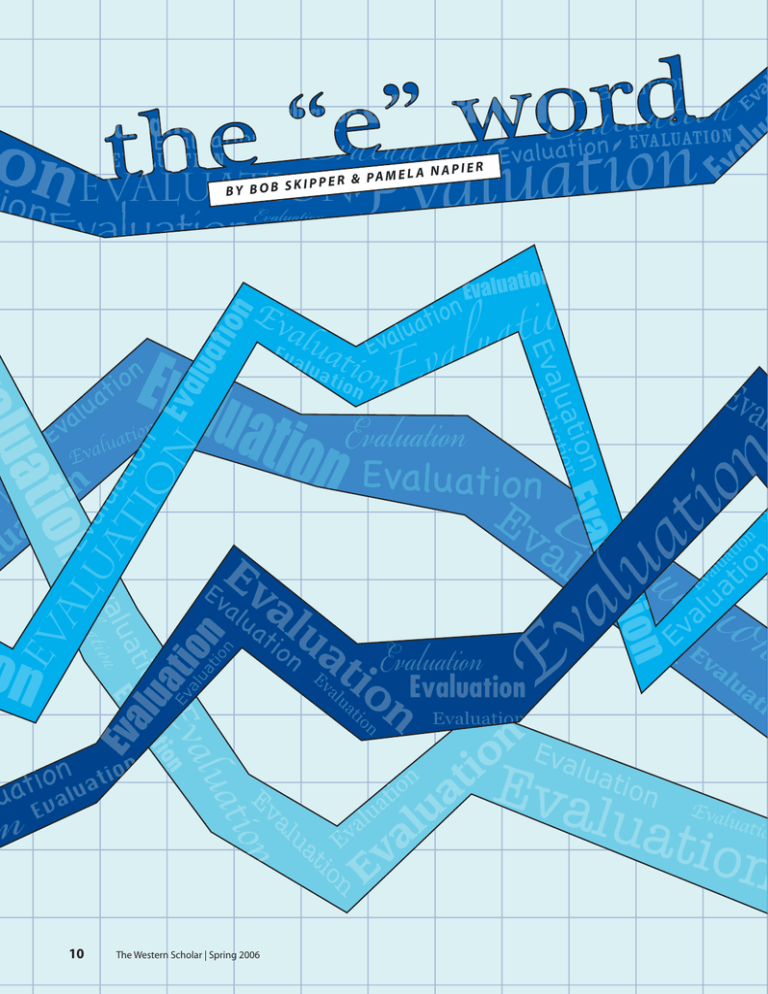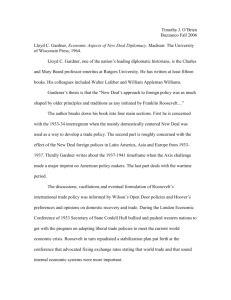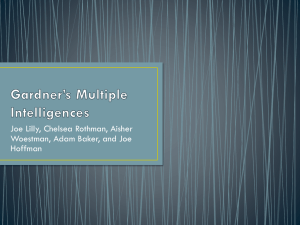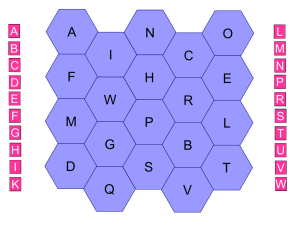0 i E R
advertisement

i er P amela Nap & pper i k by B o b S 10 The Western Scholar | Spring 2006 Childhood obesity. Bioterrorism. Health literacy of the rural elderly. Auto mechanics’ exposure to used gasoline engine oil. At first glance, these things appear to have nothing in common, but not for Marilyn Gardner. She has conducted evaluation research in each of these areas — and others. Even her background is diverse. Dr. Gardner holds a bachelor’s degree in journalism and advertising from Southern Illinois University, a master’s degree in wellness from the University of Mississippi, and a doctorate in health behavior from the University of Alabama at Birmingham. But she contends her varied background is what is most helpful in her current position as assistant professor of Public Health. “With advertising, you’re selling a product or service. To be successful, you have to know your instead of viewing it as an integrative and continuous process. And sadly, many people and agencies simply do not see the value of evaluation.” One agency that does see the value is the Barren River District Health Department (BRDHD), an agency with which Gardner frequently partners in her evaluation research. “Evaluation is the often-forgotten but critical component for any program that uses public funds to address community need. For far too long, public health and other publicly-funded services, have just ‘gone forth to do good’ without ever learning how to measure if our efforts actually accomplished anything,” said District Director Dennis Chaney. “But no publicly funded service can be responsibly run without evaluation as a key activity. A well-designed and wellexecuted evaluation is the cornerstone of planning.” “For far too long, public health and other publicly-funded services, have just ‘gone forth to do good’ without ever learning how to measure if our efforts actually accomplished anything.” audience, how reach them, and how to motivate them. It’s the same with public health. We try to get people to buy into changing their behaviors. We sell health,” she said. But measuring success in public health is much harder than it is with products or services sold via advertising campaigns. This is where Gardner’s expertise in evaluation comes into play. “Often times, the true impact of a public health program doesn’t occur for years, sometimes decades. In the meantime, you need to determine if what you’re doing is working.” Gardner added, “One of the challenges faced in health program evaluation is finding appropriate proxy measures for a desired health outcome or a behavior and a rigorous way to assess them.” According to Gardner, it is not uncommon for people to cringe when they hear the “E” word. “Many people view evaluation as being officious and as something that takes too much time and other valuable resources away from running their programs. Many people also mistakenly believe that evaluation is something that you add on at the end of the program Dr. Marilyn Gardner Western Kentucky University 11 Beth Siddens, Health Planner at BRDHD, added, “If you compare publicly-funded services to a moving vehicle, then assessment and evaluation together are the steering and the brakes. You can go forward without brakes or evaluation, but before long you either crash or get stuck in a ditch.” Tricia Callahan, Assistant Director for Proposal Development in Western’s Office of Sponsored Programs, stated, “More funding agencies are requiring rigorous evaluation designs, something that hasn’t been emphasized as much in the past. Some agencies want to see as much as ten percent of the project budget devoted to evaluation.” Because of this, Gardner collaborates with other faculty members outside of public health on their projects. “That’s one of the best parts of being an evaluator. I get to work on really interesting research projects with people who are content experts in some very fascinating fields.” Laughing, she added, “I’m not so sure they feel the same about my field.” Gardner also assists state and local agencies and organizations with their funding and evaluation efforts. “In this sense, evaluation is both applied research and public service. It also provides wonderful service-learning and civic engagement opportunities for our students.” Much of what she and her students do for these agencies are needs assessments. “Needs assessments allow programs to identify targets for change based on good data rather than someone just thinking it’s a good idea. They also establish good baseline data for future impact evaluations.” Health Risk Behavior Survey (NCHRBS) — which assesses several priority health risk behaviors of college students including behaviors contributing to unintentional and intentional injury; tobacco use; alcohol and other drug use; sexual behaviors that contribute to unintended pregnancy and sexually transmitted infections; unhealthy dietary behaviors; and physical inactivity. Later, Gardner obtained funding through the Office of Sponsored Programs to conduct an indepth analysis of the data. “The data are being used for planning purposes on campus — to identify where we need to put our time and effort in intervening to reduce risk and to ensure student health, safety, and academic performance.” A detailed report of the findings was disseminated to key stakeholders on campus and within the community. Gardner hopes they will use the findings collaboratively to establish priorities for programmatic issues. “I’m hoping that once priority areas are identified, groups will work together to design and implement health programs aimed at reducing risk among WKU students.” But educating students, Gardner stated, isn’t enough. “There are things we can do as an institution to reduce that risk, and to provide an environment that promotes and rewards healthful behaviors.” Gardner is hopeful her findings will be used for policy decisions and institutional change on campus. “Some agencies want to see as much as ten percent of the project budget devoted to evaluation.” Findings from these assessments often generate lengthy reports that, once submitted to the agency, are generally used to direct policy and implement programs, something she finds gratifying both professionally and personally. “In the five years I’ve been at Western, I’ve had the opportunity to see my evaluation efforts make a difference both in the community and on campus.” Gardner is hoping her recent evaluation efforts will make a difference in the lives of WKU students. Initially, Gardner was asked by WKU Health Services to devise a strategy for obtaining a random sample of students for the 2004-2005 administration of the National College 12 The Western Scholar | Spring 2006 Gardner is confident that the institution will administer the survey every few years so that she and others will be able to track trends on campus to see if these efforts are making a difference. “Fortunately, there has been great support from administrators for this project. They understand that evaluation is a process, and not a one-time activity; that it is a continuous feedback loop that allows programs to capitalize on strengths and improve weaknesses, so that, ultimately, we can improve our campus’s health.” She added, “They see the value in evaluation.”



